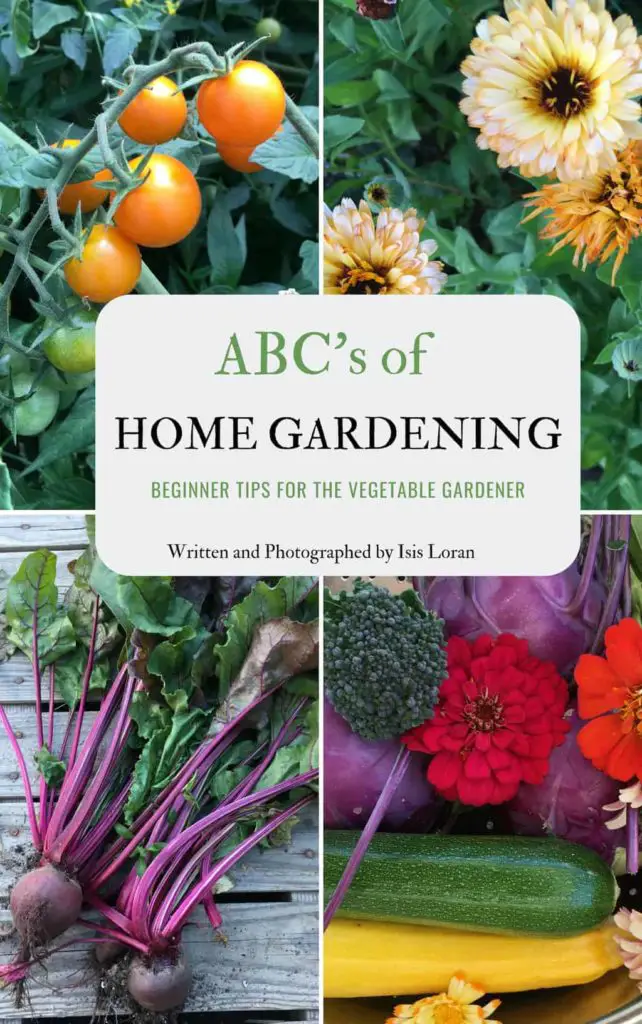
Hello Vegetable Gardener!
This gardening guide is a fun A to Z break down of certain gardening concepts. It offers beginners ideas and an introduction to gardening.
You might new to gardening, or maybe you’ve grown a garden or two. The great thing about gardening is that there’s always something new to learn. If you’ve dabbled a bit in gardening and would like to take a fun quiz, I have a what type of gardener quiz are you that you can take that might help you with your gardening journey.
There are new varieties of seeds, plants, flowers to grow. You can try out new gardening methods, learn something new about pests or face growing challenges in your region.
I wrote this guide with the beginner or new gardener in mind. Even if you’ve had a garden for awhile, I hope it’s still a fun way to see the possibilities of knowledge within gardening.
It’s my hope that this gardening guide will help you to open and ask questions, and explore that wonderful world of gardening even more. I touch on each subject briefly, and leave it to you learn more.
The best teacher is your garden, and what you put into it will change what you learn with every growing season.
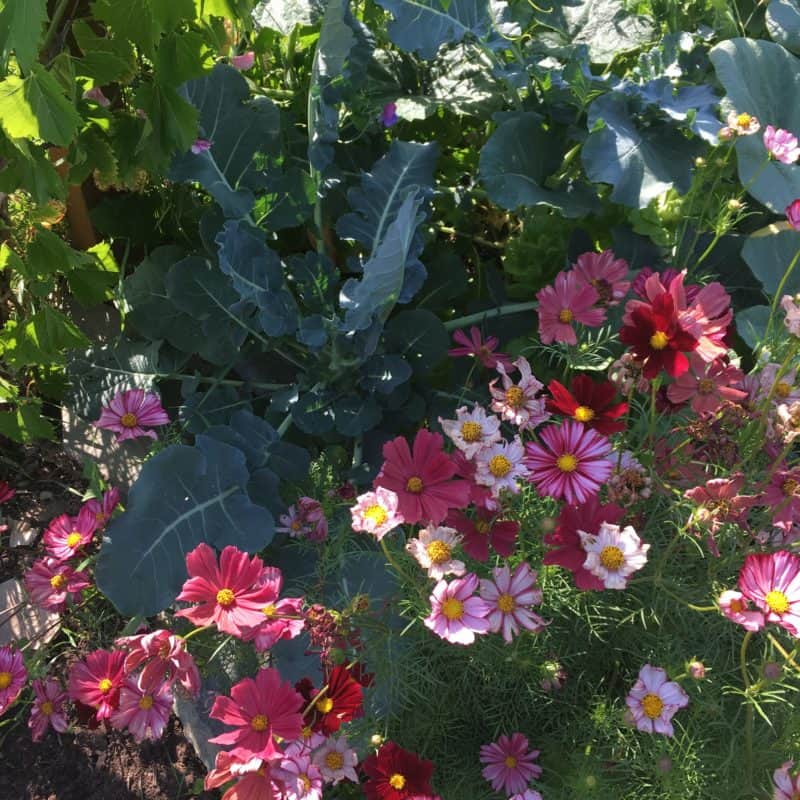
This vegetable gardener guide is FREE! However it is very long.
You can also purchase this post for only $1.99 as a 39 page guide which includes printable tables like the one below
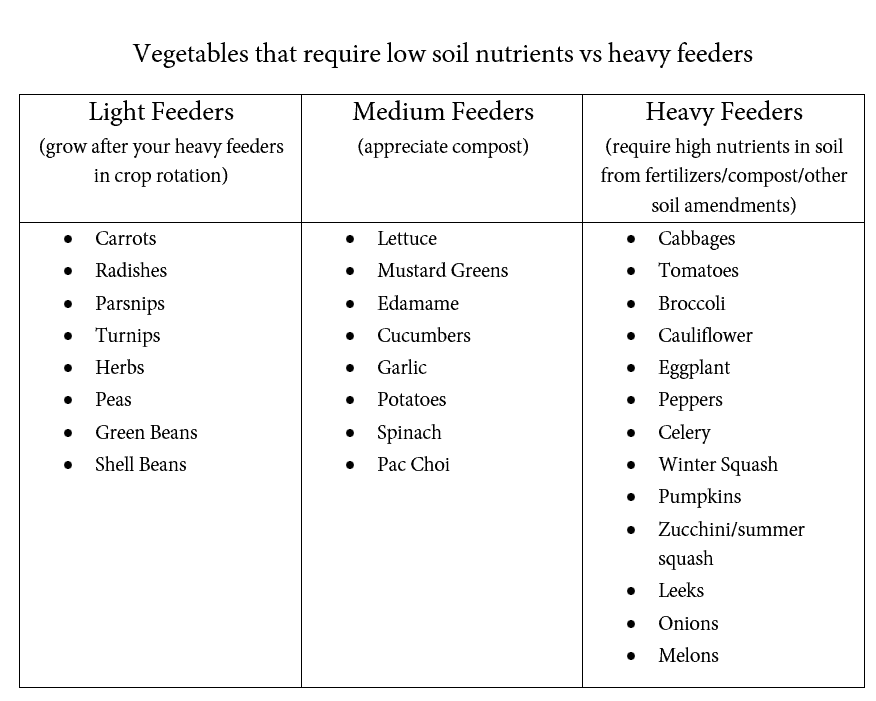
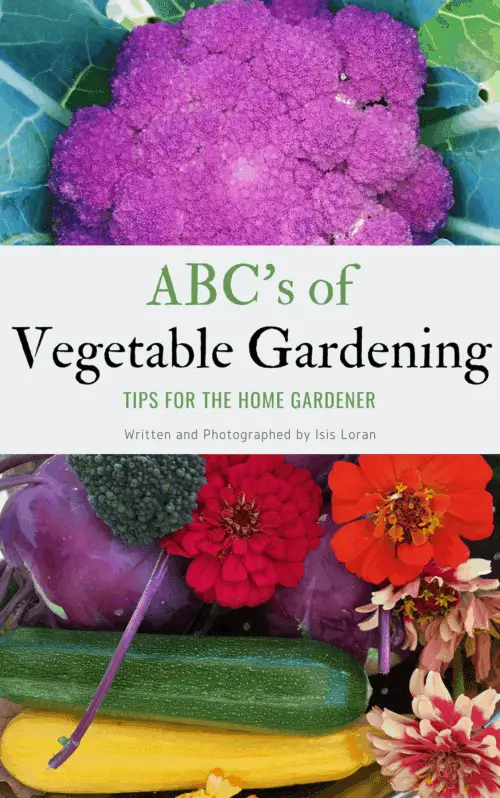
ABC’s of Home Vegetable Gardening
- Attention Please.
- Bugs- the Good and the Bad
- Compost
- Deciding what to Plant
- Easy Vegetables to Grow
- Frosts
- Garden Beds
- Herbs
- Indoor Gardening
- Journal your Garden
- Kitchen Garden Design
- Leafy greens
- Mulching
- N-P-K
- Organic gardening
- Pollinators
- Quitting on certain Plants
- Roots
- Seeds or Live Plants?
- Timing
- Umbelliferous & the rest of the plant families.
- Vertical gardening
- Watering
- Xeriscape design for drought
- Yard planning & design
- Zinnias and other easy flowers
 Attention please.
Attention please.
One of my biggest tips and advice to a new or seasoned gardener is that you have to pay attention. Paying attention to every element of your garden is important because you can often catch a mistake before it gets worse. You might be able to save a plant from certain pests because you caught them before they multiplied in numbers or size. Perhaps you over watered your seedlings and now have fungal problems. By paying attention to soil moisture levels, things like this can be prevented.
Paying attention means constantly checking on your garden. Sounds like too much work? You can definitely take your hands off the wheel, certain plants are more forgiving than others. However, if you want to be a great gardener over time, paying attention will help guide you. By being mindful of the process of gardening, you will learn more.
Observe, take notes, keep a garden journal. Make a note of your frost dates each year. Write down that time you transplanted seedlings too early and they died of a frost. Write down the dates you sowed your seeds or when you noticed those cabbage moth pests in the garden that ate everything. Take weather notes, extreme weather that season, what you did wrong and what you did right.
Overtime this observation will pay off. You’ll ask more questions, learn more answers, catch more problems and troubleshoot how to become a better gardener. Most of us aren’t born with a magical ability to garden, we learn the process by paying attention.
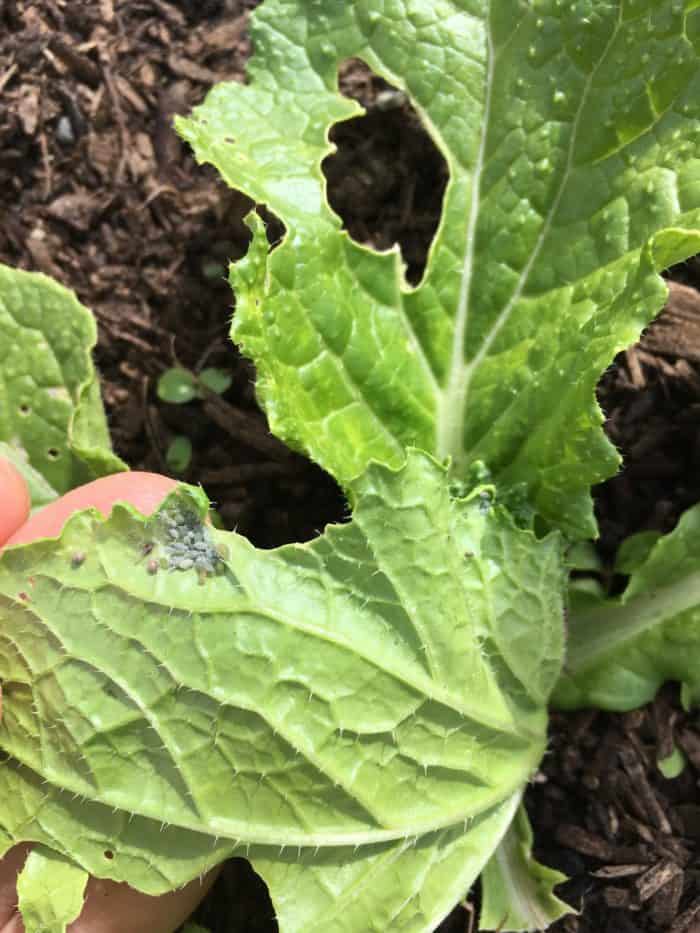
Bugs. The good, and the bad.
Oh bugs.
To some they are creepy crawling grossness, something to shy away from. Others can be quite fascinated by them. Home gardeners need to become at least acquainted with bugs. Not something you wanted to hear? Sorry. I didn’t like bugs when I started out too. You’ll learn that there are good bugs, and bad bugs in the garden.
The bad bugs will eat your crops in a blink of an eye. It will take sometime for you to know which ones are good, and which ones that you don’t want around. There’s an important balance to organic gardening, and this is something I think all gardeners should consider: too much ‘bug control’ aka chemical sprays also harm those good bugs.
The good bugs can be wasps that eat cabbage worms from your plants preventing massive damage or happy bumblebees pollinating that watermelon or zucchini for you so that you actually get a crop. Good bugs are vital to keeping that pest balance. A common example are ladybugs and aphids. If you grow plants that attract ladybugs, they will eat a lot of aphids reducing damage. If you spray your garden with chemicals you also kill the predator (ladybug) and the prey (aphids). Then if aphids come back you have no predators to help control the pests. It’s about balance.
Bugs are important, from earthworms to lacewing flies. There’s a great book called ‘Good Bugs, Bad Bug’ for you to learn more.
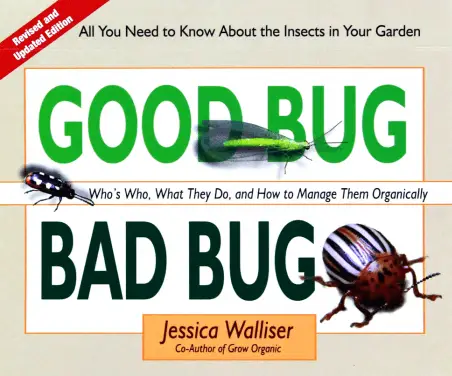
Another B of Gardening is bolting vegetables

Compost
Compost is food for your plants. Almost any plant will benefit from a layer of compost. What is compost? It’s decomposed matter full of nutrients. You can buy compost, or make your own. Compost adds essential organic matter into your soil.
Making your own takes time, and the right balance of materials to decompose. You mix ‘greens and browns’. Make sure any plant matter you add to your compost doesn’t have disease and hasn’t gone to seed.
Remember the smaller the pieces in your compost pile, the faster they’ll decompose.
Compost piles need the right level of moisture and air to decompose properly. It helps to turn your pile once or twice a week.
Compost consists of: Green Matter (wet), Brown Matter (dry) Air & water.
Deciding what to plant
Choosing what plants to grow in your home garden is both challenging and easy. If you like certain flowers or food, can you not just grow it? It’s not quite that simple.
Everyone has a certain growing zone, which is also called your hardiness zone. This tells you how many frost-free days you have in a year to grow plants. This zone also determines the types of plants you can grow. Some growing zones are frost-free and can grow tropical plants like the copper plant, but sometimes struggle with cool season veggies. Other times you might be in a short season zone and only have a small window to grow plants. Fruit bushes, trees, perennial flowers and bulbs all have specific growing zone requirements.
Once you know your growing zone, you can write down your last spring frost, and first fall frost. These dates are approximate, every season is different. These frost dates mean you cannot plant or sow seeds that cannot handle frosts before or after. They will die otherwise! That’s something you don’t want. For example, peanuts are fairly frost tolerant, but not entirely. So you’ll have to be careful when you plant your crops.
Make a list of your favorite flowers, veggies and fruits. Then look up those plants and requirements. Your seed catalogs will have days to maturity which give you an approximate time of when you can expect a harvest. These dates are from when a seedling is in the ground, not directly seeded. For example, say a broccoli plant says 70-80 days to maturity. You need to add on another 6-8 weeks for that seedling if your starting yours indoors. If you directly seeded broccoli into the garden, you’d also be adding on those weeks.
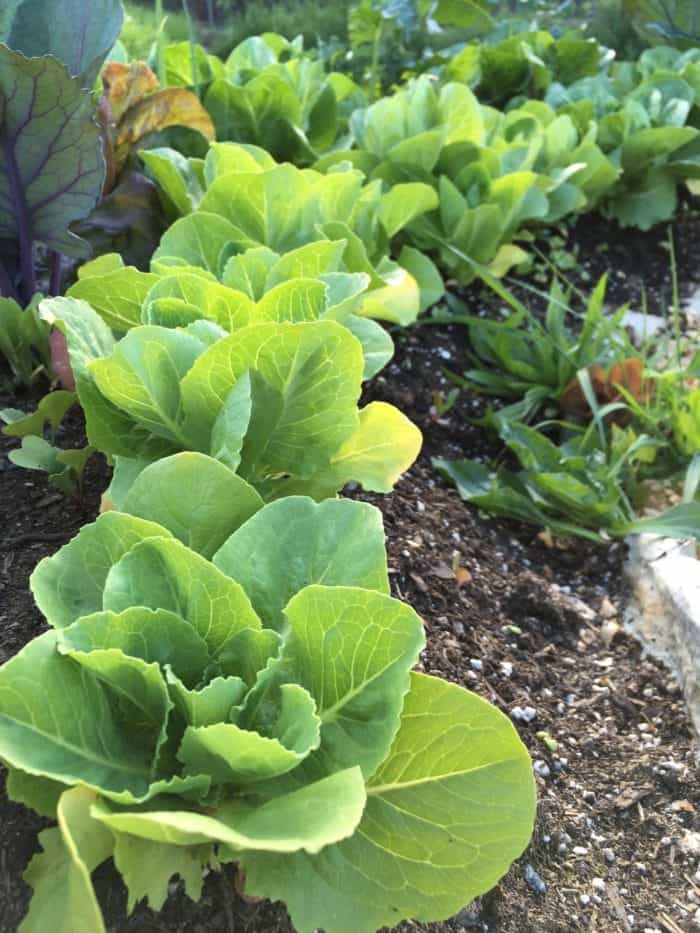 Easy plants to grow.
Easy plants to grow.
Sometimes you need an easier garden. Many people lead busy lives and don’t always have extra time to baby a plant. Certain veggies or flowers are easier to grow than others. Some require heavy rich soil and consistent fertilizers, others grow happily in poorer soil.
If you’re busy or a new gardener, you’ll have better success with your garden if you grow the easier plants. Once you’re more experienced, you can venture into the harder plants to grow. This list doesn’t mean that you won’t have pests or other problems, it means that in general, they grow decently fast without much fuss and you don’t need to fertilize often.
Easy Veggies & Herbs
- Lettuce
- Radishes
- Zucchini/summer squash
- Kale
- Potatoes
- Garlic
- Green Beans
- Peas
- Cucumbers
- Mustard Greens
- Arugula
- Annual herbs like Basil, Cilantro
Harder Veggies to Grow
- Broccoli
- Cauliflower
- Brussel Sprouts
- Eggplant
- Hot peppers
Certain veggies require rich soil, but are easy to grow
- Cabbages
- Tomatoes
- Sweet Peppers
- Winter Squash
- Pumpkins

Frosts
Oh frosts. If you don’t get them skip on ahead. If you do, let’s chat about them.
Frosts get a bad rep, but did you know they can make veggies taste sweeter in the fall? Did you know certain early spring crops can handle them?
There are plants you can directly sow into your garden before your last spring frosts. You can also transplant certain seedlings before your spring frost dates. Always be sure to wait until after the frost for your warm season crops such as tomatoes, peppers, corn, beans, eggplant etc. There are many flowers that cannot handle frosts too such as dahlia bulbs.
Crops you can sow before last spring frost
- 6-8 weeks: arugula, mache, spinach
- 4-6 weeks: peas, radishes, claytonia,
- 3-5 weeks: lettuce, green onions/scallions, radishes, swiss chard, turnips,
- 3-4 weeks: broccoli, broccoli raab, cabbage, brussel sprouts, collards, kale, mizuna, mustards, bok/pak choi,
- 2-4 weeks: carrots, mibuna, parsnips, plant potatoes, tatsoi
- 1-2 weeks: endive, rutabagas
Crops that can handle frosts
- Cabbages
- Brussel Sprouts
- Carrots
- Cauliflower (winter varieties)
- Celeriac
- Broccoli
- Broad Beans/Fava
- Sprouting Broccoli
- Beets
- Cilantro
- Corn Salad/Mache
- Collards
- Kale
- Kohlrabi
- Leeks.
- Winter Lettuces
- Mustards
Remember that with heavy frosts, you need to select cold hardy winter varieties.
Garden beds
Gardening couldn’t happen without garden beds! You can also use containers to grow food in if you’re not able to put in permanent beds. If you’re renting there are some great fabric beds too that you can fold away after you’re done using them or have to move.
Common garden beds include raised wooden garden beds or even large rocks. You can re-purpose wooden materials, weave branches or buy new wood to build your own. You can buy raised bed kits if you’re not as handy with building.
Raised beds are nice because they warm up the soil faster in the spring, offer great water drainage and amendments and seeds aren’t as easily flushed away with lots of rain. You can also grow ground level, meaning you plant in a certain plot or row.
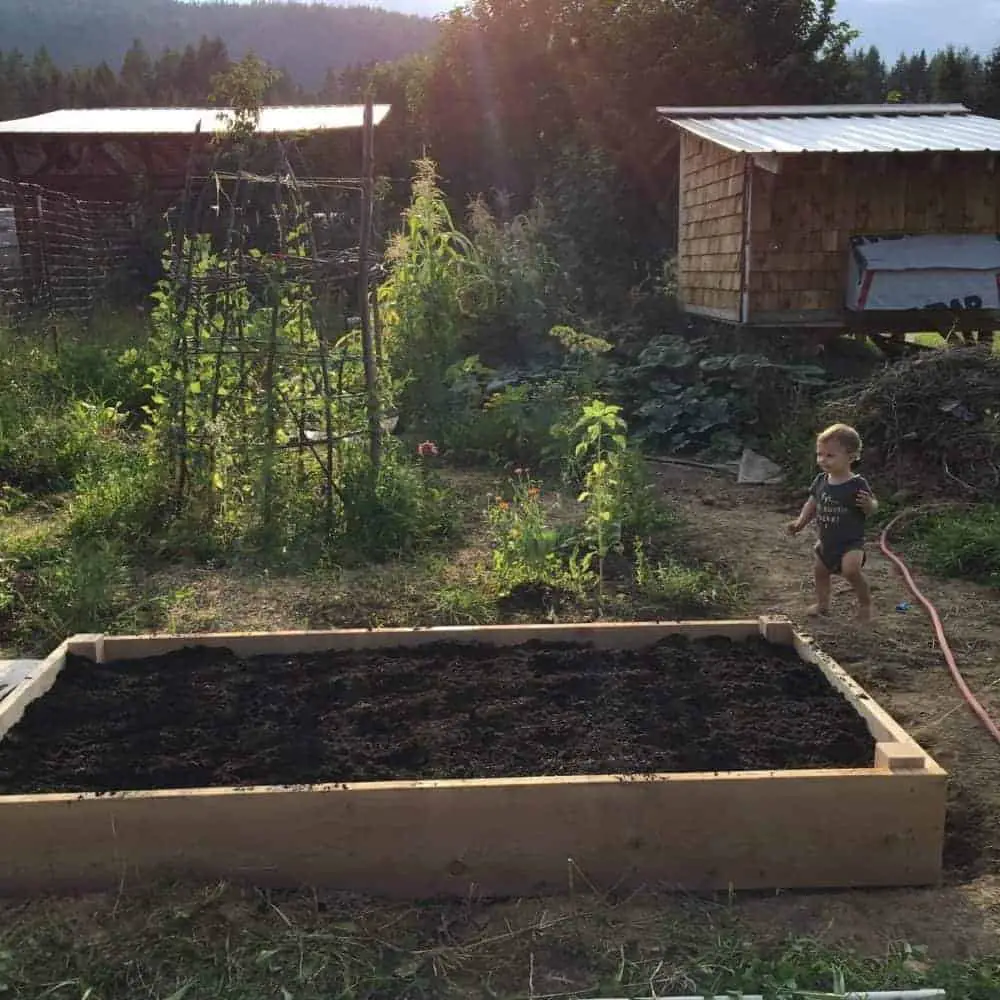
Whatever your garden beds you’ll want to number them for when you’re garden planning. Each garden bed or row will be where you write down what you plan to grow that year. Your garden beds also need to be known for crop rotation because it’s good to rotate the plants you’re growing in each garden bed to reduce pests and disease.
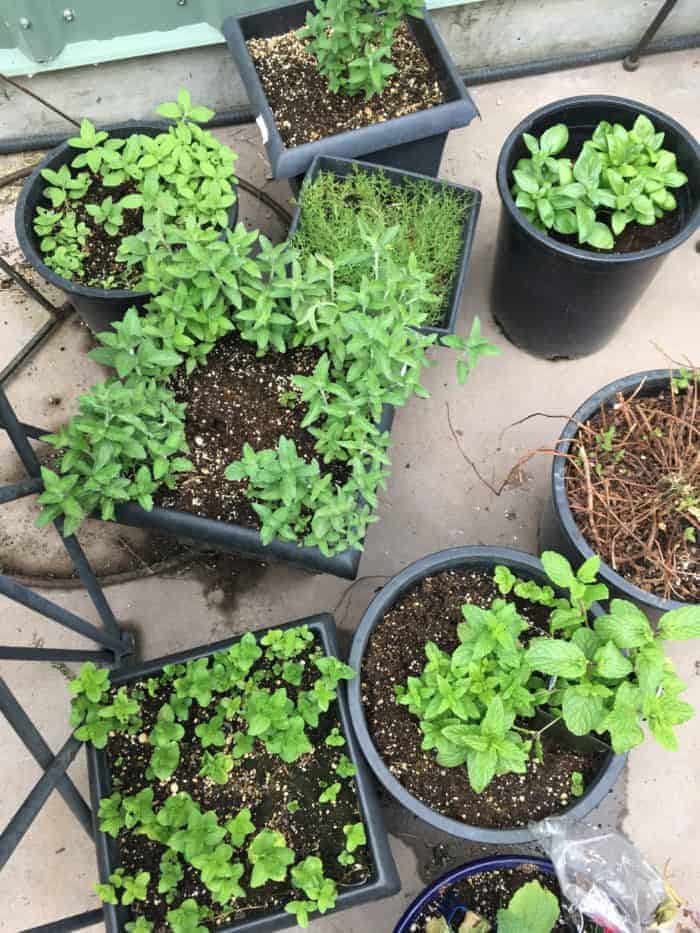 Herbs
Herbs
Herbs are wonderful to use fresh form the garden. Because herbs cost a lot to purchase fresh, they make a great addition to your garden. Certain herbs are perennials, others annual meaning you have to sow or transplant them into your garden every year.
From your culinary herbs such as chives, cilantro, dill or basil, to medicinal herbs like calendula, arnica or herbal tea such as mint or holy basil. There are many wonderful herbs to grow.
Some of your annually sown herbs can actually self-sow too. Herbs like Calendula, Borage, Dill, Cilantro (the seeds are Coriander) can self-sow if you allow them to flower and go to seed. If you don’t wish for these herbs to self-sow, make sure they don’t flower and go to seed.
Indoor gardening
Many people want to have a garden but live in apartment building and have no space for an outside garden. Some might have a sunny balcony but are still limited on what they can grow.
One way to have a small garden of fresh harvests is to grow an indoor garden. You can grow microgreens, indoor pots of herbs, and even venture into hydroponics if you really wanted to get gardening indoors!
Even with a large garden outside, we get a few months of snow where we live. I find that last stretch of winter when you’re craving spring to be the perfect time to grow microgreens indoors.
Your indoor gardening set up might be small, a few pots of herbs like basil, chives, cilantro or oregano in front of a sunny window. You might have the space to have an indoor greenhouse which can be used to grow microgreens, trays of baby greens or for herbs.
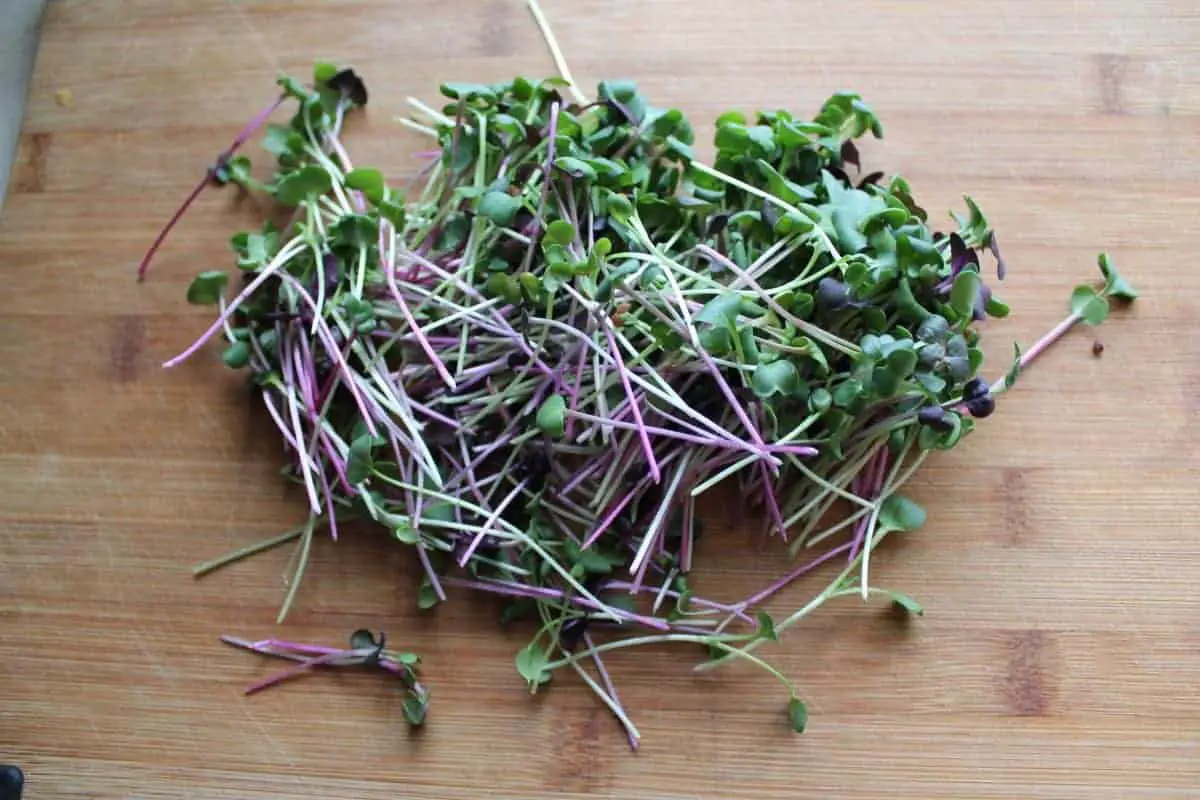
How to Grow Microgreens Indoors
We eat a lot of microgreens, so our family grows them in large trays now. You can also use one of the many types of sprouting systems.
- Fill a seeding tray with soil, make sure you have one that has drainage holes and place it inside another seeding tray that is solid without the drainage.
- Fill the tray up with seed starter or sterilized soil. I also add worm castings for a seedling nutrient boost.
- Lightly scatter your seeds in the soil and barely cover the seeds with more soil. I place the trays under our grow lights to warm up the soil before sowing.
- Water lightly and check on them daily. Many people make the mistake of over watering seedlings so be sure the soil is damp but not too dry or wet.
- Harvest after about 1-3 weeks!
Journal your garden.
One of the best things a gardener can do is to keep a garden journal.
Every growing season your garden and success will be different.
The weather does strange or unfavorable things, some of your crops turn out, others don’t. Sometimes you have a terrible season with pests, too much rain or an increase in plant disease. Maybe you tried a new variety that you loved, or you didn’t pay attention to your sowing schedule.
You can use any notebook or bullet journal. You can also buy garden journals. I also sell a printable garden planner to help you stay organized.
Some questions you might ask yourself are what varieties did well that year, what crops failed miserably. What did you do well, what timing did you get wrong or what your gardening goals are.
Click here to print off 20 questions for your garden journal. Printable Garden Journal Questions
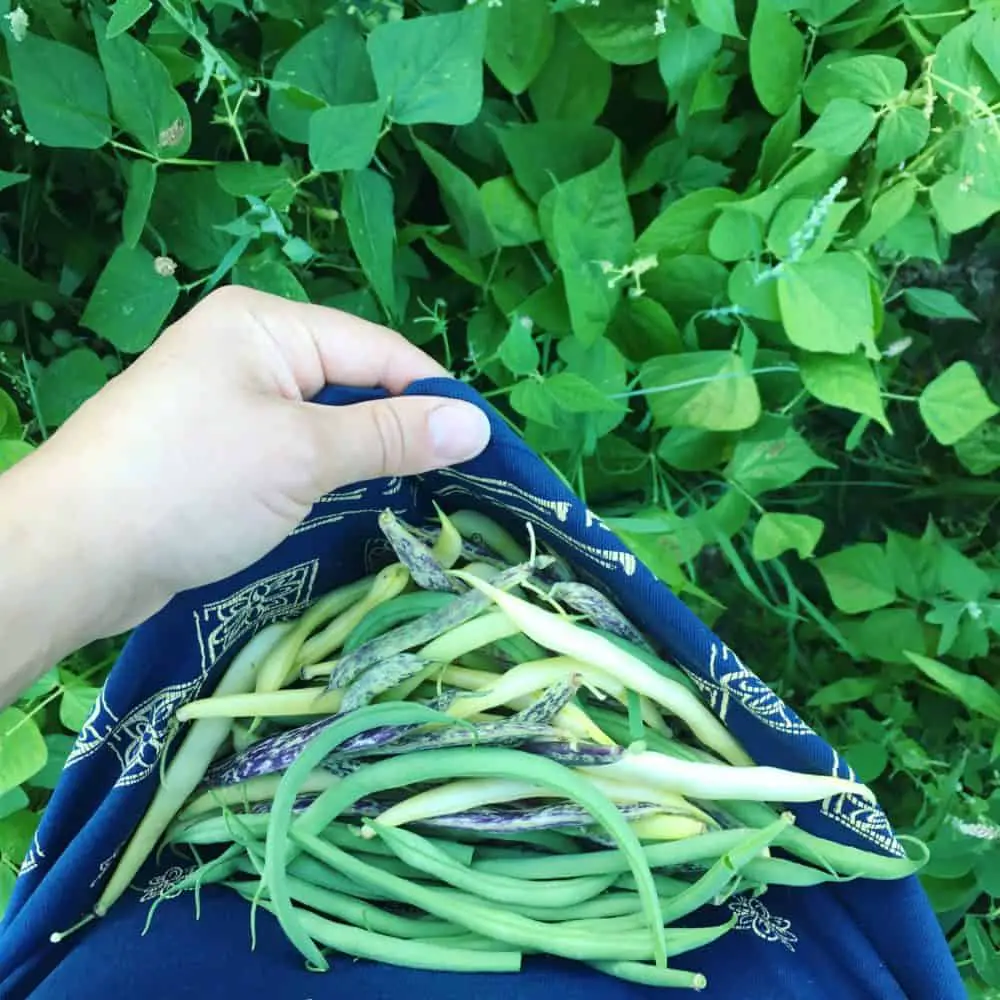
Kitchen Garden Designs
Your kitchen garden is close to your home for easy access to fresh harvests. The home kitchen garden will include flowers and herbs with homegrown vegetables. There are plenty of different kitchen garden designs that you can choose from.
What you need for your kitchen garden:
- Adequate sun exposure- you’ll need 6-8 hours of sunlight for most crops. Make sure there aren’t too many garden shadows preventing veggie growth or grow crops that prefer some shade in those areas.
- Keeping your garden design as close to your kitchen as you can. The goal is fresh food from your doorstep!
- Try and use the edges as much as you can.
- Create fun designs. Try sketching them out in different ways for eye appeal.
- Consider adding a bench or table in the center or close to your kitchen garden.
Plants for the Kitchen Garden:
- Culinary herbs
- Salad crops like lettuce, radishes, arugula. Learn how to grow greens year-round.
- Fresh Greens like spinach, mustard greens, kale, collards etc.
- Heirloom tomatoes
- Green snap beans/French filet beans. One of my fav varieties is ‘fortex’
- Summer squash & zucchini
- Flowers, especially edible ones like calendula or nasturtiums
- Gourmet peppers
- Green onions, scallions, shallots
- Baby root crops like beets, turnips
- Medicinal herbs are very eye catching and the bees love the flowers.
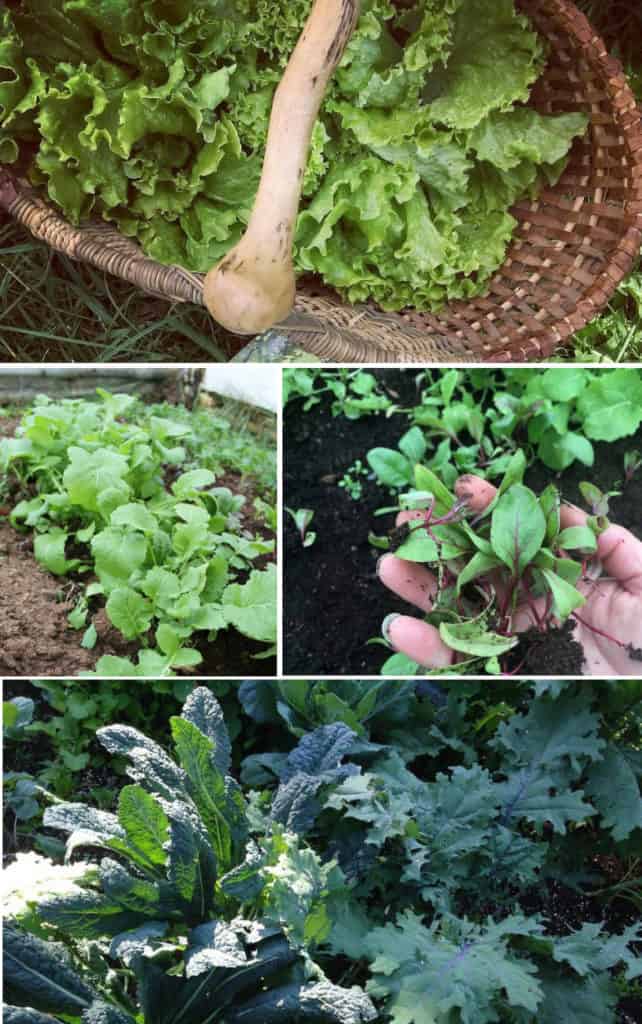
Leafy Greens
Leafy greens are one of the first vegetables I suggest to any new gardener. They are expensive to buy at the grocery store, easy to grow and they also grow fast. This makes them an excellent crop to grow in the spring and again towards the end of summer for the fall months.
You can grow baby greens and harvest within 30 days, or wait 45-60 days for full sized lettuces or kale for example. These veggies are super nutritious for you, and you can even interplant them around larger plants like broccoli or tomatoes before they need the space.
Some of the greens you can grow include:
- Arugula
- Leaf lettuces
- Spinach
- Kale
- Swiss Chard
- Head lettuce
- Collards
- Mustard greens like mizuna, tatsoi or komatsuna
- Pac choi/Bok Choi and other Asian veggies
- New Zealand Spinach
- Raddichio
- Endive
- Beet greens
- Turnip greens
- Spring cabbage
You can grow greens year-round too. Many can handle frosts and be harvested in winter season extenders. You can also grow baby greens indoors.
Get the guide to growing greens year-round for only $2.99
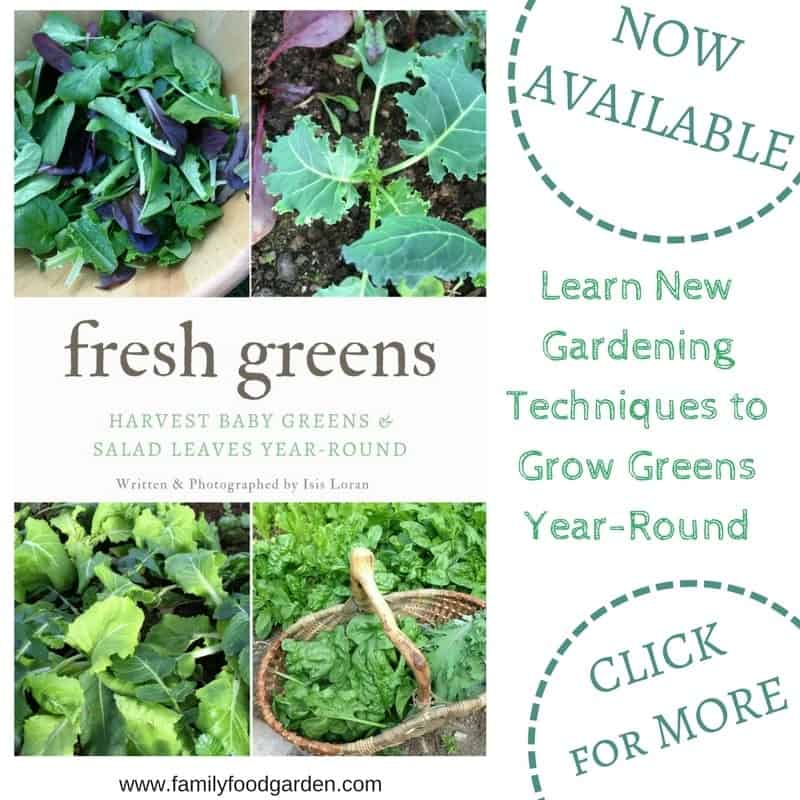
Mulching
Garden mulch can be added to your paths or your garden beds. It has many great uses such as:
- Mulching helps to build up your garden soil by adding organic matter. The mulch gets decomposed by soil microorganisms and increases their population increasing nutrient uptake by your plants.
- Mulches help to suppress garden weeds. The mulch blocks out the sunlight reducing germination rate.
- Mulching around your crops creates healthier plants because there’s less weed competition which increases nutrient uptake and underground root expansion.
- Mulching your garden beds reduces the need for watering as there’s less soil evaporation happening and better water retention. This is great for areas of drought.
There are some cons to garden mulches. Some of the main problems are pests, weed seeds or chemicals depending on the mulch you use. Slugs like the cool damp mulch and can easily hide & reproduce. Rodents can also increase in population as they like to nest and can hide. Another con is that depending on the type of mulch you use, sometimes you’re adding chemicals or weed seeds.
Mulch also decomposes fast and you’ll need to re-apply your garden mulch every year.
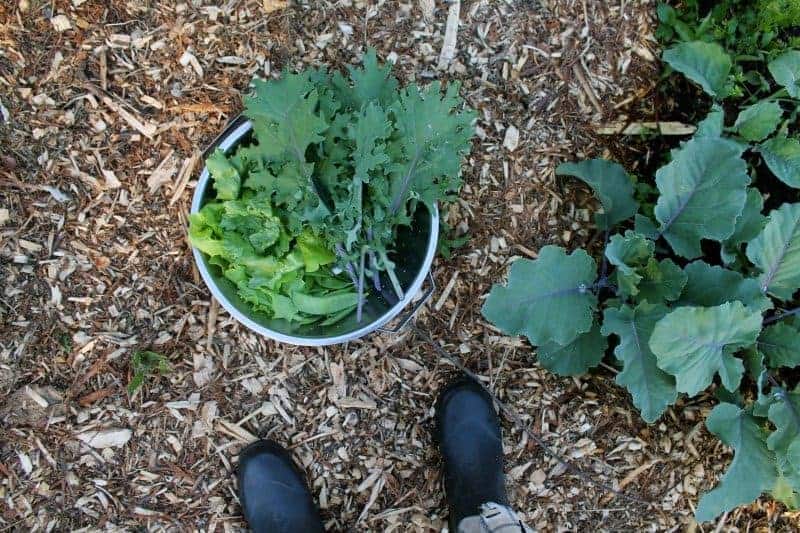
N-P-K
Good plant growth means good soil and available nutrients. Plants take up nutrients from the soil in order to grow. Certain plants or flowers require a lot of nutrients, and some require far less. Some plants need so many nutrients you need to fertilize every couple of weeks in order to keep them happy.
Some of the soil amendments include compost, decomposed manure, fish fertilizers, organic or chemical fertilizers which have specific ratios of N-P-K, straw, leaves, worm castings, kelp, seaweed, mineral supplements such as Azomite, alfalfa and others.
What is N-P-K? They are primary macronutrients: Nitrogen (N), Phosphorus (P), and Potassium (K). Soils often lack these nutrients which means we need to restore the soil. It’s always good to get your soil tested, that way you can add the correct amounts. In general, Nitrogen is needed for leafy growth, Phosphorus is good for flower, root growth fruit development. Potassium is needed for general plant function. Your leafy greens that you grow will appreciate nitrogen, however too much N for fruiting crops will result in less fruit production because they need more P + K.
The N-P-K balance and soil amendments will take time and practice to understand. I highly recommend you do further reading on soil and what your plants need to grow. Many growing guides and seed catalogs will mention what your plants need. I learned a lot about taking care of my soil while reading gardening books.
Different crops need more or less NPK depending on whether or not they are a fruiting crop or leafy crop. Some crops are soil boosters and make fantastic pre crops before the nutrient hungry crops
- Soil Boosters: Dry/soup beans, snap beans, peas, fava beans, soya beans, cowpeas. Restores N.
- Brassicas & Leafy Veggies: Cauliflower, kale, cabbage, broccoli, kohl rabi, brussel sprouts, collards, swiss chard, spinach, lettuce, mescluns, mustards, arugula, endive & other greens. Uses lots of N.
- Fruiting Crops: Tomatoes, peppers, eggplant, zucchini/summer squash, melons, winter squash, gourds, cucumbers. Need lots of P & K and some N.
- Root Crops: Carrots, radishes, parsnips, rutabaga, turnips, beets. Less N & more P.
Organic Gardening
Organic gardening has so many benefits. The goal of an organic garden is to reap the benefits of knowing what was in your soil, where you bought your seeds and reduce the cost and environmental impact of food being shipped from far away. You know that your vegetables haven’t been sprayed with anything because you grew them yourself.
To grow an organic garden you want to make sure that your soil and amendments are organic, that you’re choosing organic or GMO free seed companies (here’s a list of organic or heirloom seed companies that I recommend) and that you keep a balanced ecosystem of bugs. That balanced ecosystem can take awhile to achieve, but your goal is to attract beneficial bugs that consume the bad. Your goal is grow lots of flowers for your pollinators and practice companion planting. You can take your organic gardening a step further and get into permaculture too, as I have.
How far you take your organic gardening depends on how high your standards are. Some choose not to use plastic or treated wood for example.
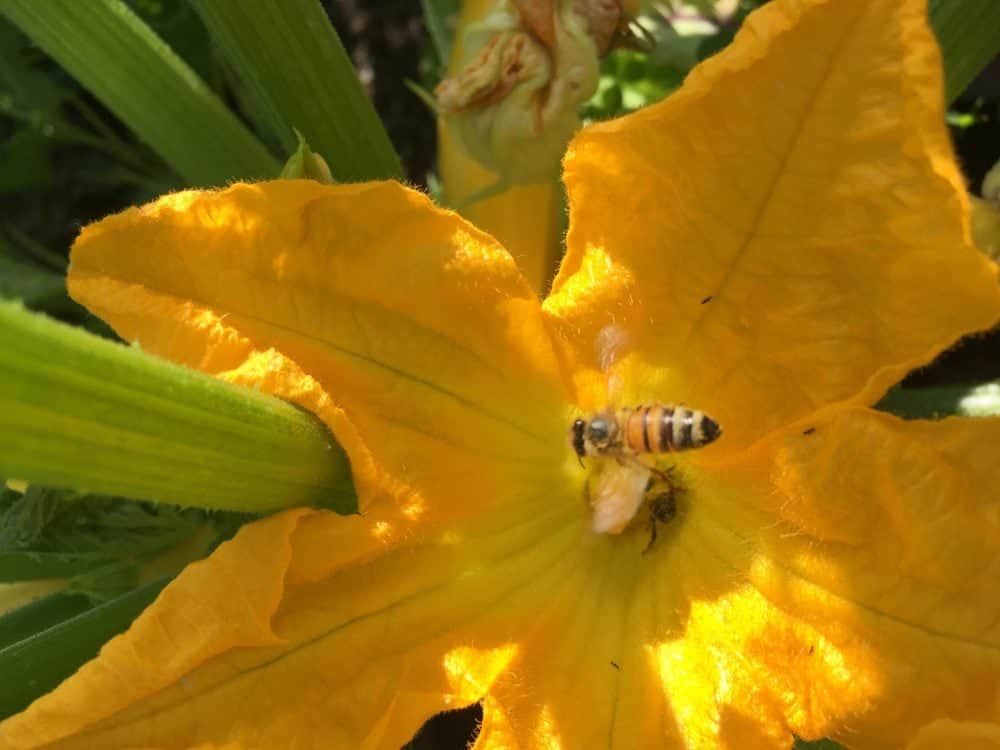
Pollinators
One of the gardening challenges I hear is that a crop flowers but never gives any harvests.
This is often a pollination problem, but not all crops need pollinators to give you yields. Crops that produce leafy greens, roots or any of the cabbage family like cauliflower or broccoli don’t grow from flowers, instead, they grow the crop that you’d harvest first and then flower later on. Other crops like tomatoes, cucumbers, squash, zucchini, peas, beans grow from a flower.
Some crops are self-pollinating and don’t need pollinators like peas, beans. Tomatoes, peppers and eggplant don’t need pollinators but yield is still increased with more pollination. Fruiting crops like pumpkins, zucchini, summer and winter squash, melons and cucumbers always need adequate pollination. You can increase the chance by growing flowers close to these plants.
To attract pollinators you’ll need to grow lots of flowers that offer the nectar that pollinators crave. Your pollinators aren’t just honey bees, but also wild bees, butterflies, hummingbirds, bats, wasps and other insects. Grow wildflowers, cosmos flowers, sunflowers, bachelor buttons, scarlet runner beans, and edible flowers like borage or calendula.
Quitting on certain Plants
Sometimes you need to quit growing certain garden plants. Sounds contradictory to babying your plants so you can harvest it right?
When some of your crops fail you can sometimes nourish the plants back to health. Other times it’s better to sow fast growing crops instead of trying to keep a dying plant alive. How can you tell?
- Watch for leaves are turning yellow or brown.
- Bug or pest infestation that seems out of control.
- Veggies look stunted and looking a little worse for wear.
- Old crops like peas have been producing for over a month and now the plants are trying to go to seed.
You can troubleshoot nutrient deficiencies and help give them a boost but sometimes there isn’t enough time left in the gardening season to make it worth your while. Sometimes you’re better to pull up the plants, add some compost and sow fast-growing vegetables.
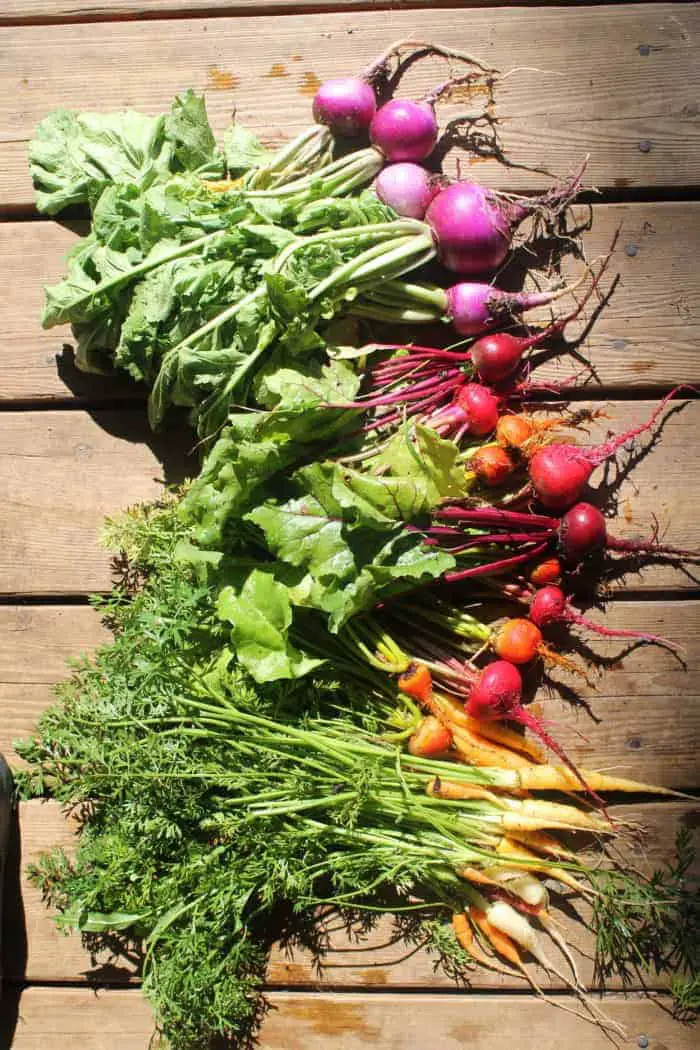 Roots
Roots
Your garden plants have roots that grow underground to absorb nutrients. Without these roots, nutrient and water uptake couldn’t happen and your plants will struggle to grow. The deeper the soil, the more depth the roots can grow and become large healthy plants. Roots depends on soil microbes in the soil to move the nutrients into your roots.
Other than your plant roots, certain crops you grow are also the root vegetables. Once again, the deeper and looser the soil, the larger these can grow. If you struggle with growing plants in clay soil, adding organic matter will be so important so that the roots can expand underground.
Root vegetables include:
- Carrots
- Parsnips
- Beetroots
- Rutabagas
- Spring radishes
- Winter radishes
- Turnips
Before sowing root vegetables it helps to loosen up the soil first. Certain root crops like parsnips and carrots only barely need to be covered with soil. They also take longer to germinate than other veggies. Others like salad turnips and radishes grow super fast. Learn more on Growing Root Vegetables Year-Round.
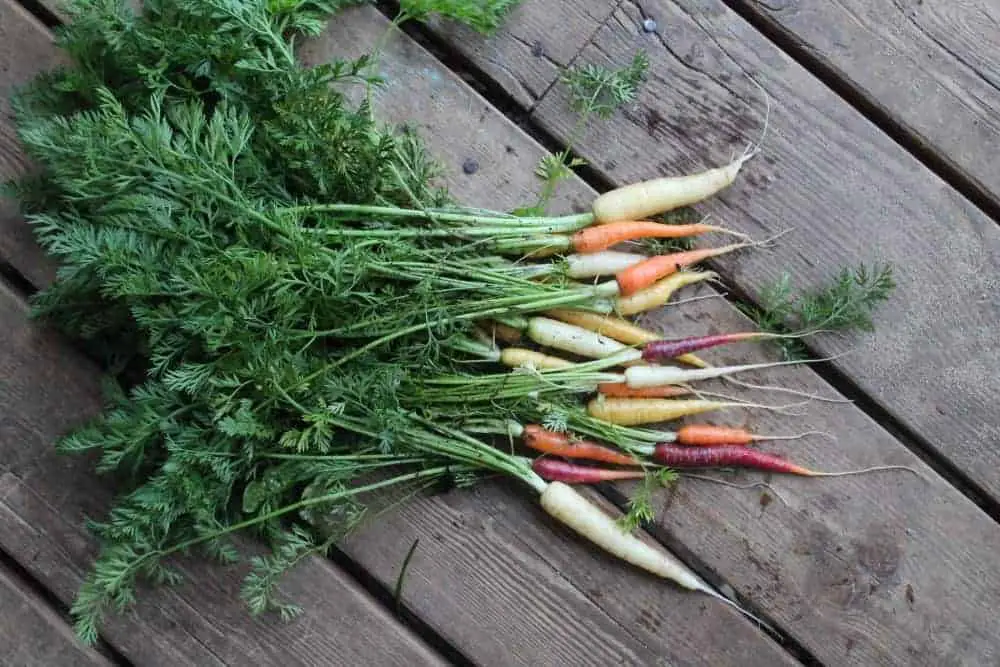
Seeds or Live Plants?
Oh seeds. I daresay I’m addicted to buying seeds. The varieties of available colors, shapes, sizes and taste go far beyond what the grocery store can offer. Purple cauliflower? Oh yes. Rainbow carrots? Yellow and purple beans called Dragon’s Tongue!?
Choosing your varieties can seem daunting. How on earth do you choose the right seeds for your garden? For your climate? Will they have enough time to grow?
Every variety of seeds will have important information on them. They will tell you how long it takes for them to grow, the sowing depth, if the variety is good for containers or colder climates etc.
If you’re a new beginner gardener, it’s a lot easier to start gardening by buying live plants. You can find these in the springtime at your local garden center or nursery. Certain seeds are better to be directly sown into your garden such as beans, peas, corn. Some such as kale, lettuce, bok choi you can directly sow into the ground, or transplanted. In general, the fruiting crops need to be started indoors many weeks before your spring frost or purchased as plants.
Over time there are certain gardening tips that you will pick up on such as seed starting indoors, composting and many others.
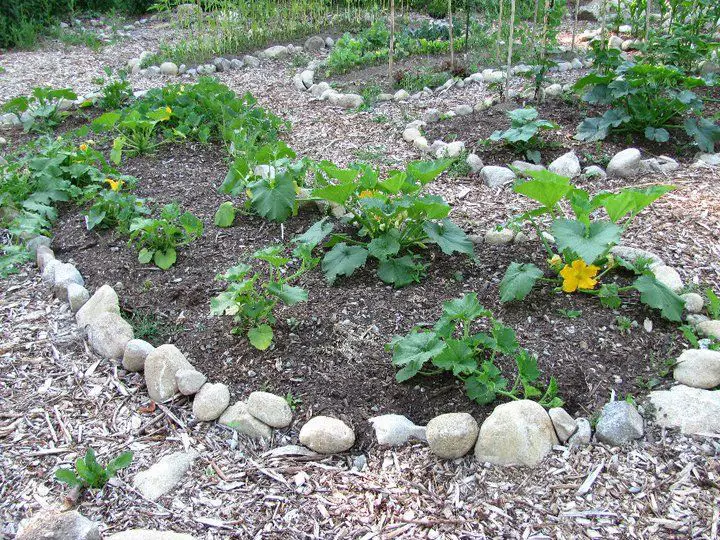
Timing
Timing your plants is hard for a beginner (or even seasoned gardener). You need to make sure you’re growing in between the frost dates for most plants. You also need to make sure you have the time for your seeds or live plants to mature in time and produce harvests. How do you figure that all out?
Whether you’re a beginner or advanced gardener, the goal of your planting schedule is to know when to put your seeds in the soil or start them inside. You can write this information on a piece of paper, or use a garden planner like the one I created.
Things you need before making your schedule:
- List of crops you want to grow for your hardiness zone.
- Your first and last frost dates.
- List of how your garden beds/rows & the measurements that you have.
- Previous season notes for crop rotation (if any).
- Seed packet information for each crop you’re wishing to grow. This will have things like: days to germinate, days before transplanting and days to maturity etc.
When you make your planting schedule you’ll be backdating your crops to see when you need to start your transplants or when it’s ok to direct seed them into the garden. For this, you need to read your seed packets. Your seed packets will tell you how many weeks your seedling needs to be before transplanting. For example, most crops will say 75 days, this means from transplanting, not direct sowing. Many crops need to be 6-8 weeks old before transplanting into the garden, but this depends on the crop.
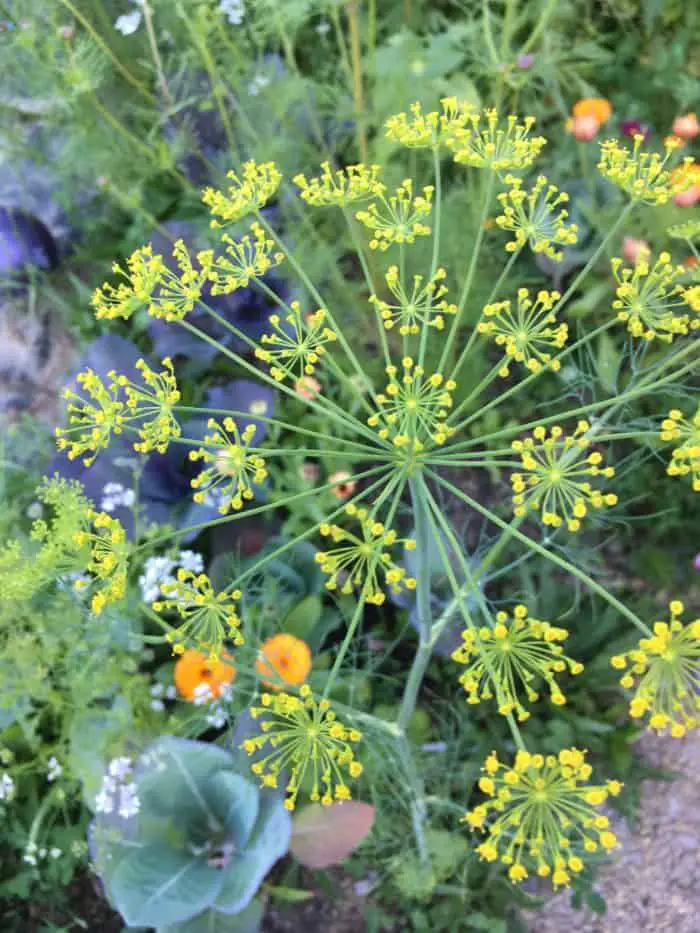
Umbelliferous & the rest of the plant families
It was hard to find a gardening word with U, but Umbelliferous (the carrot family) is one of the plant families to become familiar with. Beginners don’t need to know all of the Latin plant families, but you need to know groups of plants for things like crop rotation.
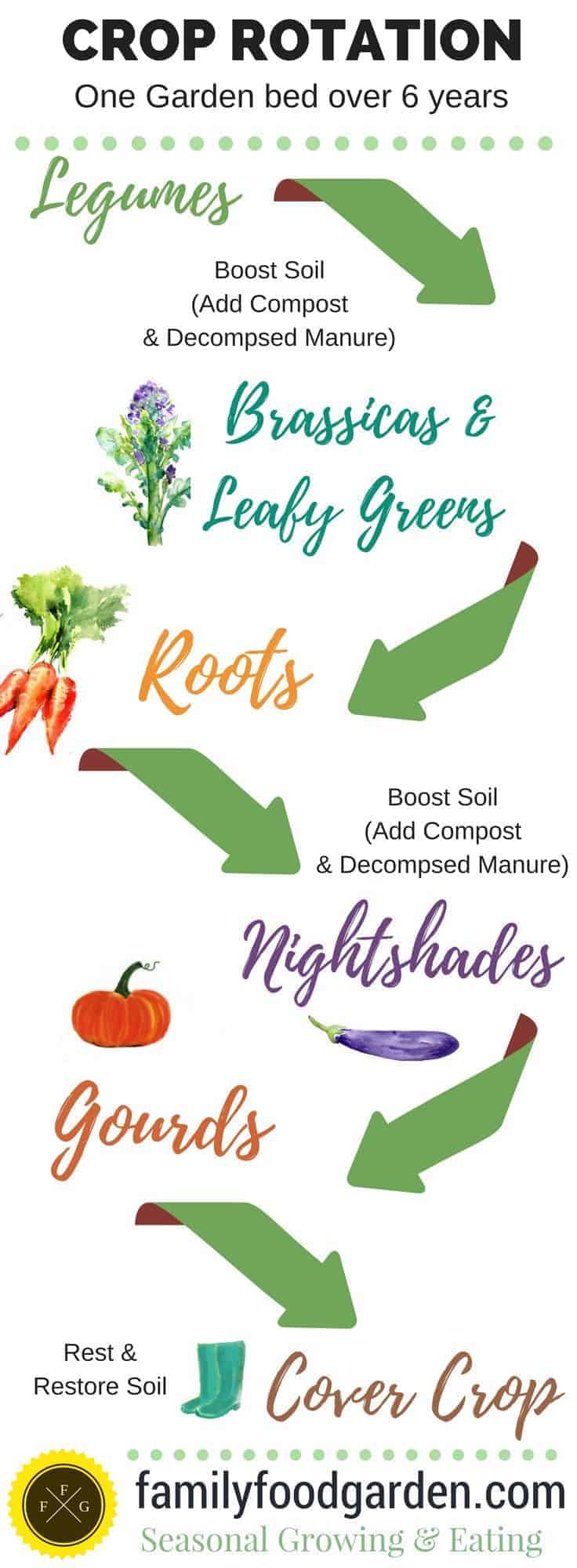
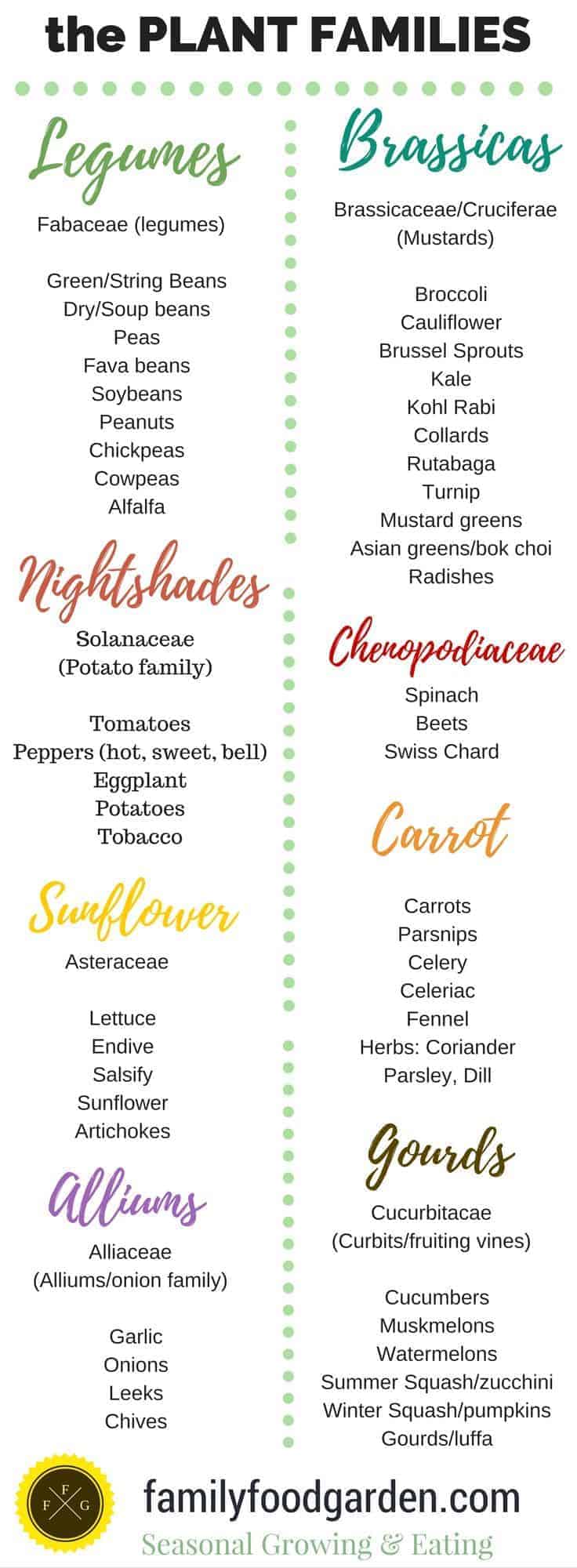
Vertical Gardening
Vertical gardening makes wonderful use of space. Growing upwards adds appealing architecture to your garden and creates a fun edible space. Other benefits to vertical gardening is you’re increasing the growing area in your garden, it’s easy to harvest from and it makes your garden look beautiful.
You need to make sure your garden trellis is strong enough to handle the weight of whatever you’re growing on it.
- A garden trellis for annuals like peas and beans might be different in strength and structure than perennial climbing plants like grapes.
- For annual climbers, pay attention to the seed packet for climbing plant size. For example some peas reach 4 feet, some as high as 12 feet. Pole beans tend to be heavier and continue to grow.
- Re-purposed materials can be friendly on the bank, but if they’re too old they might have started to decompose making it less structurally sound.
There are many plants that benefit being grown upwards:
- Peas
- Pole Beans
- Cucumbers
- Small squash and melons
- Vining flowers such as: sweet peas, clematis, certain nasturtiums, morning glory
- Grapes
- Hardy Kiwi berries
- Tomatoes
- Hops
Below you can see our trellis that we made weaving re-purposed branches.
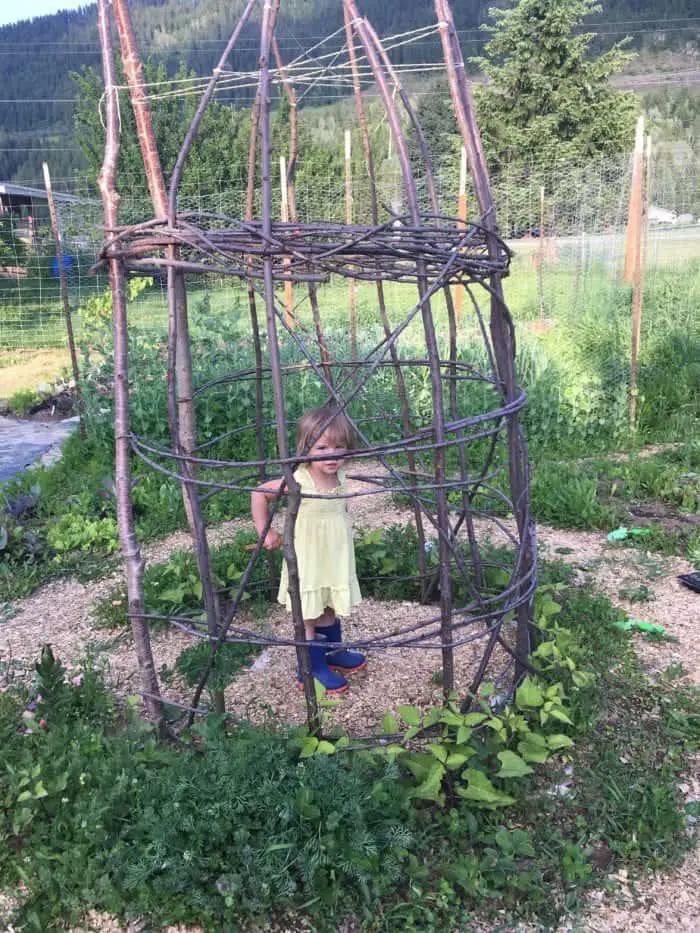
Watering your garden
It goes without saying, that unless the weather is a perfect mix of sun and rain, you’ll need to water your garden. There are periods of time when you won’t need to, especially during winter or spring rain spells. During the heat of summer, it’s especially important for you to water your garden. Plants need the right balance of water to grow, and some need more than others. Your cool season crops like lettuce, cabbage, kale or broccoli will benefit from extra watering in the summer months.
Tips for watering your garden:
- Water your garden in the early morning, before the heat of the day. Watering during peak hours wastes water as most of it is evaporated with the heat.
- Containers dry out much faster than ground level plants and will need more frequent watering.
- Make sure you know your local water restrictions. Often during drought you can only water during certain times of the day.
- Many crops benefit from being watered at the base of the plant. This reduces the water directly on the leaves potentially increasing disease. Crops can also get sun burnt if you water on the plant leaves on hot days.
- When transplanting your seedlings you need water immediately. The same goes for when you are sowing seeds into your garden beds.
- Too much water isn’t good either, it can wash away seeds or soil amendments.
- It’s better to water deeply and less frequently, than often but only reaching the topsoil.
- Mulching can help with water retention reducing the need to water as frequently and helping plants stay cooler during the summer.
- Blasts of water can help dislodge pests like aphids which feed on your plants and can cause a lot of damage.
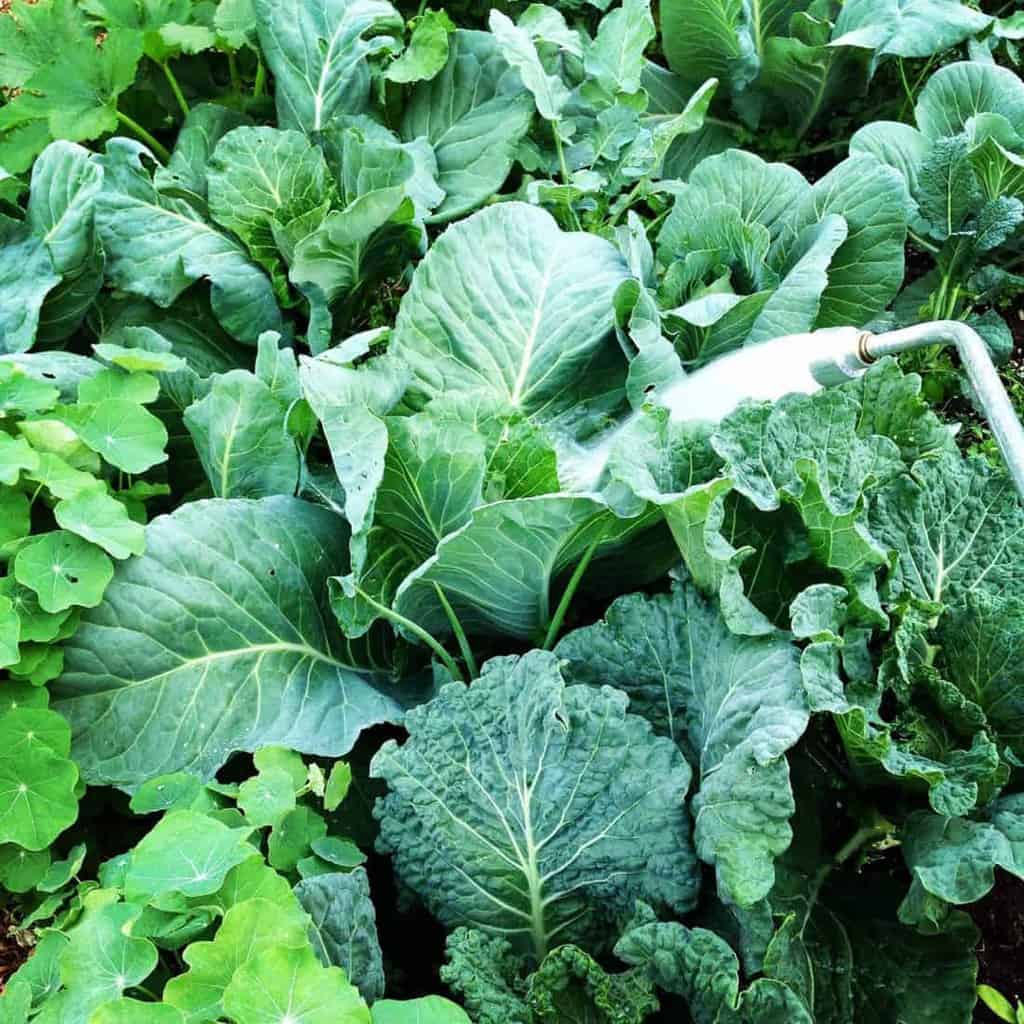
Xeriscape design
What on earth is xeriscape? Sounds like a spaceship?
Xeriscaping is a type of landscaping or gardening design that reduces or eliminates the need for watering from irrigation. In places with drought for many months of the year or desert like climates, this helps you have a landscaped backyard with plants.. Locations that don’t get rain for months need to focus on water conservation. The goal of Xeriscaping is to reduce water use by 50 – 75%.
Elements of Xeriscaping include:
- Studying your backyard before planting. Knowing where the shade is, and where water drains to is very important before creating your design.
- Choosing the right plants that require less water than others. Using native plants, shrubs, and trees that have been adapted to the region and are drought resistant.
- Organic matter increases moisture retention and feeds your plants naturally. Focusing on healthy soil full of organic matter from be beginning is important.
- Lawn uses up lots of water and fertilizers. Choose drought-tolerant ground covers instead of lawn and reduce lawn size as much as possible.
- Water management is a focus. Setting up irrigation and watering deeply so that plant roots are larger and can soak up more water in-between dry periods.
- Mulching helps to retain soil moisture and temperature. It also helps to block weeds from growing using up your precious water resource.
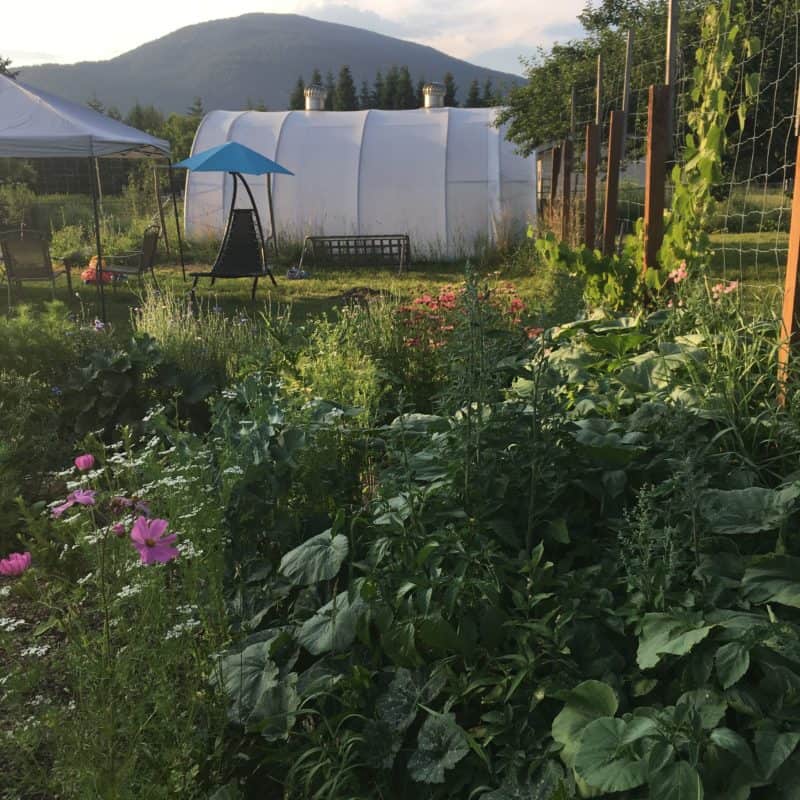
Yard size = gardening potential
Your yard size will ultimately determine the size of your garden. Although you can increase growing space with vertical gardening, cascading plants on fences or walls, or adding containers, there are some things to consider before planning your yard. Play around with designs and mapping out your yard. Often it takes doodling many ideas down, and being mindful of important elements before proceeding.
Although you might have a nice flat spot for garden beds, make sure you’ve checked your backyard sun exposure before putting in your garden.
- Check sun exposure and backyard shadows. You need at least 6-8 hours a day for most crops.
- It really helps to observe the seasonal changes in your backyard and micro climate too, some people will have drought during the summer and do a lot of gardening in the fall and winter months; others will have snow during the winter and grow most of their food during the spring and summer.
- A flat spot tends to be preferred.
- Figure out what kind of garden beds you’d like. This will depend on budget and size.
Zinnias and other easy flowers
The home gardener can greatly benefit from adding flowers to the vegetable garden. Flowers like zinnias helps to attract pollinators, increase pollination, adds beauty to your garden and can be used as cut flowers.
There are many different kinds of flowers you can choose from. For beginner gardening, I’d suggest to start with the easiest ones to grow from seed. You can also buy plants at your local nursery. Be sure to check whether or not the flowers are perennials (meaning they come back year-to-year) or annuals. Most annuals are not frost hardy and will need to be planted after your spring frosts. Certain flowers can be sown early in the spring, others you need warmer weather for.
When growing a low maintenance garden, easy flowers from seed means they germinate quickly, can grow in medium quality soil, don’t need boosting with fertilizers. Basically you can sow these seeds and they don’t babying.
Some of the easiest flowers to start with are:
- Sweet Pea
- Bachelor Buttons
- Zinnias
- Cosmos flowers
- California poppies
- Iceland poppies
- Calendula
- Nasturtiums
- China Asters (use fresh seed, can be slower than others from seed)
- Pansies
- Marigolds
- Sunflowers

I hope you enjoyed this long post on the ABC’s of Home Gardening!
Remember you can also purchase this post for only $1.99 as a 39 page guide and it includes printable tables 🙂
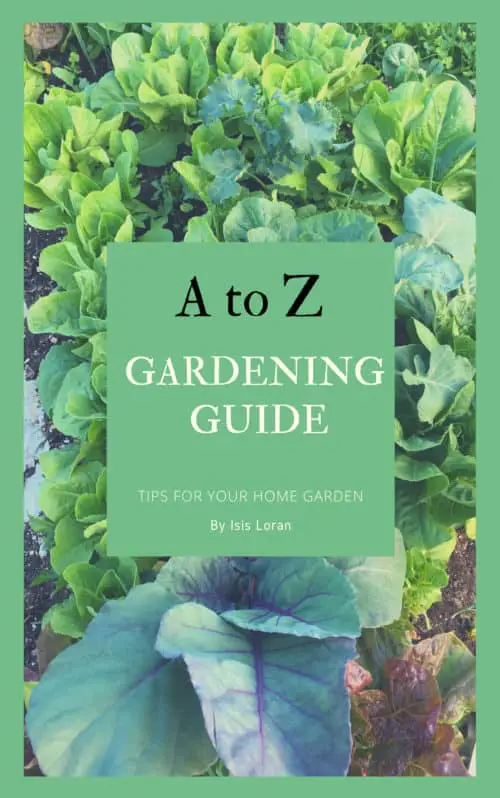

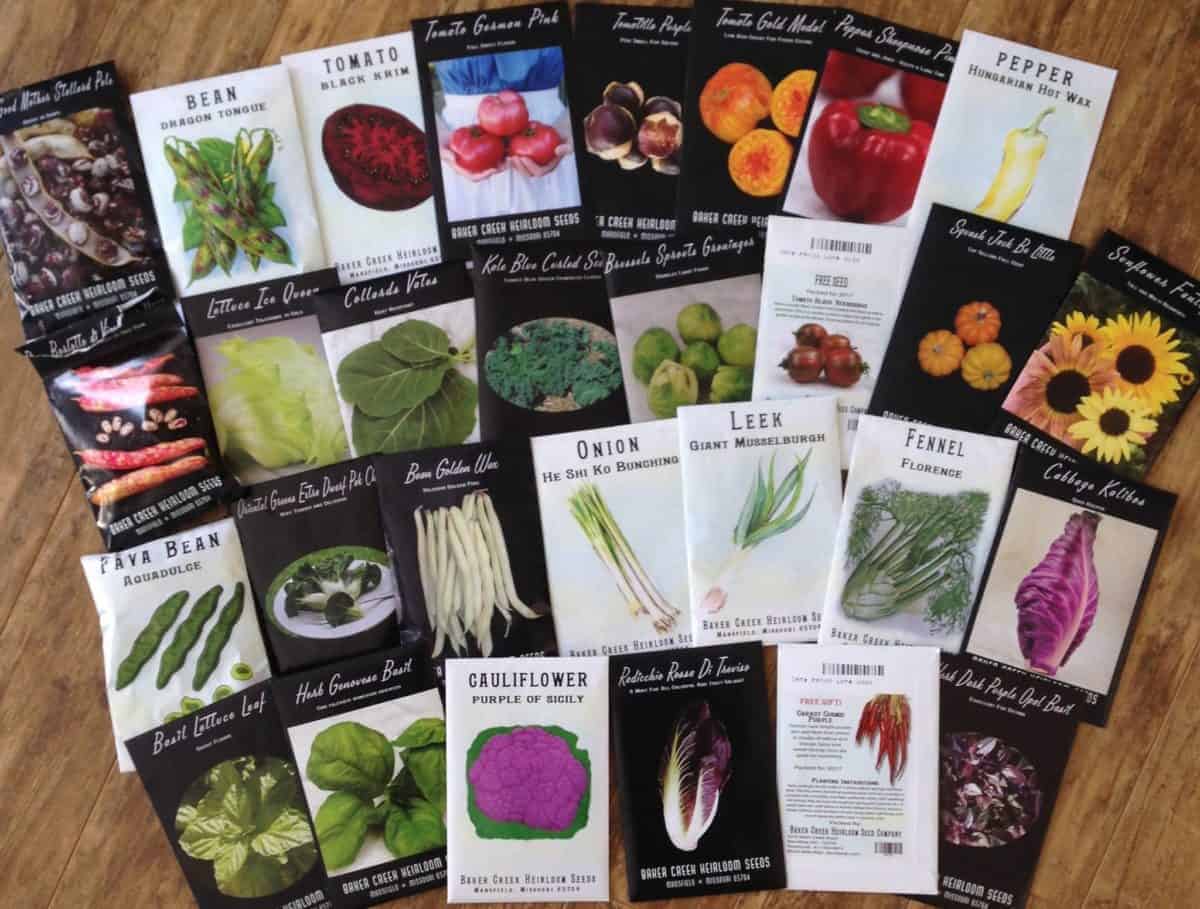
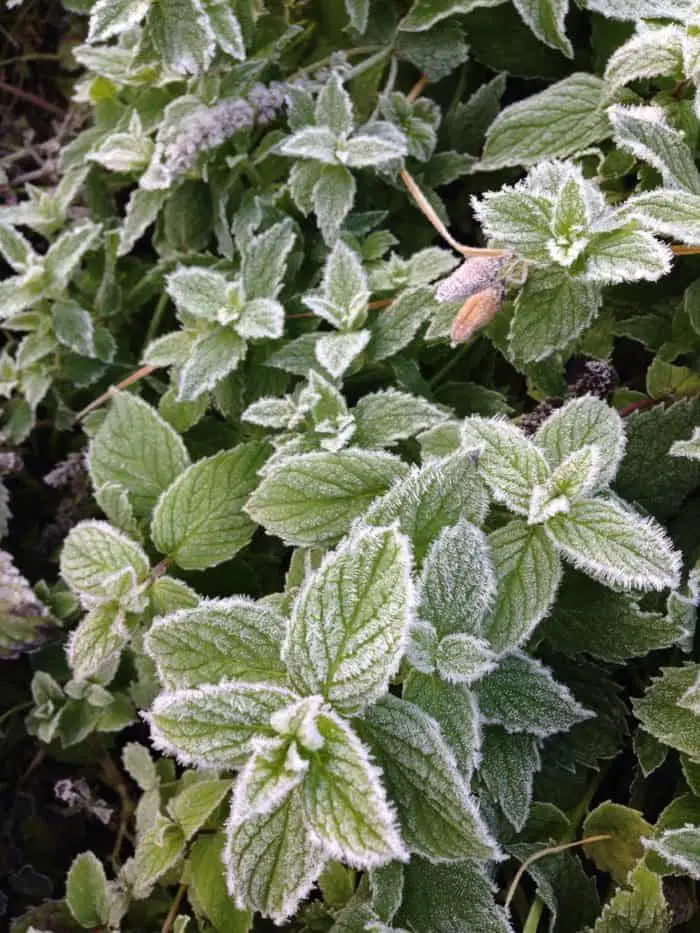
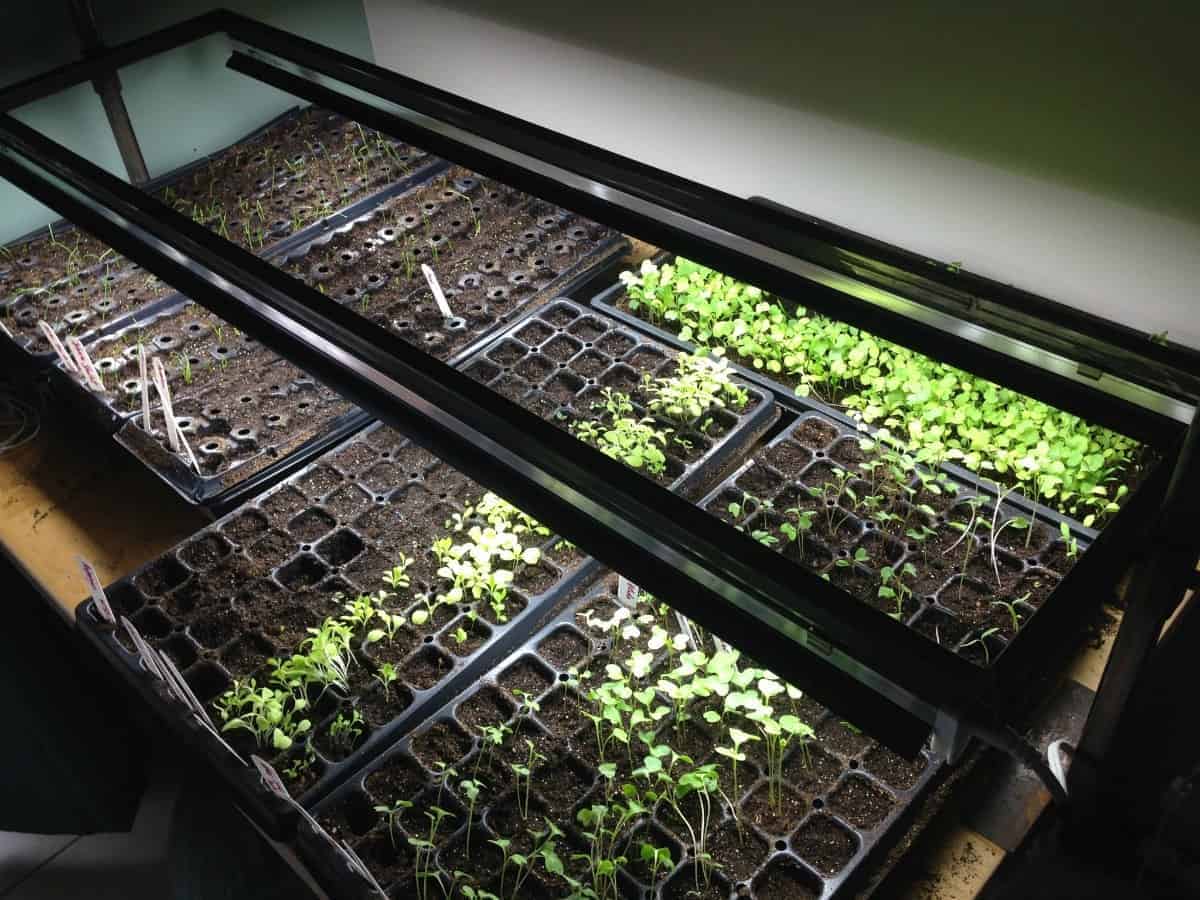
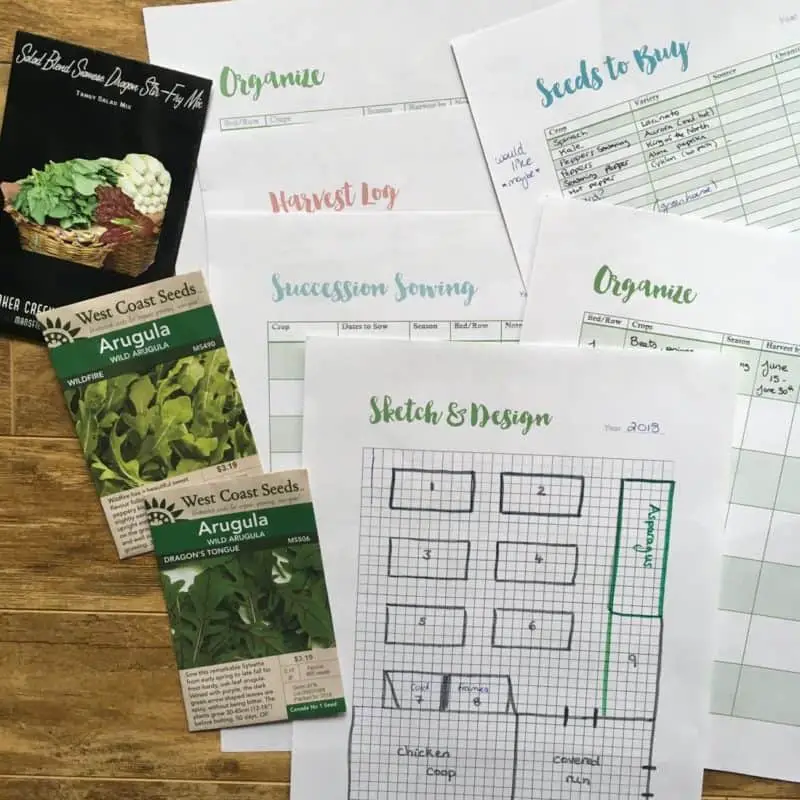
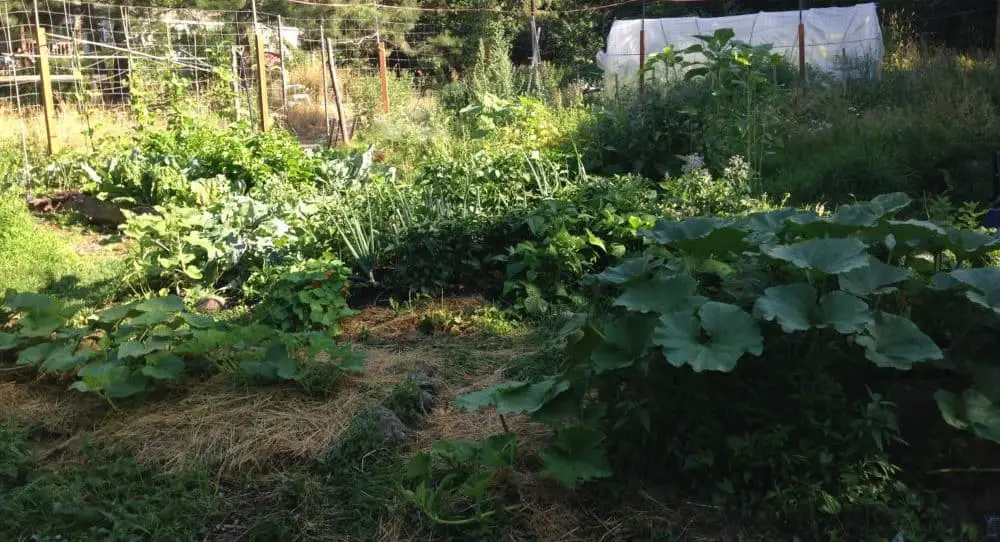
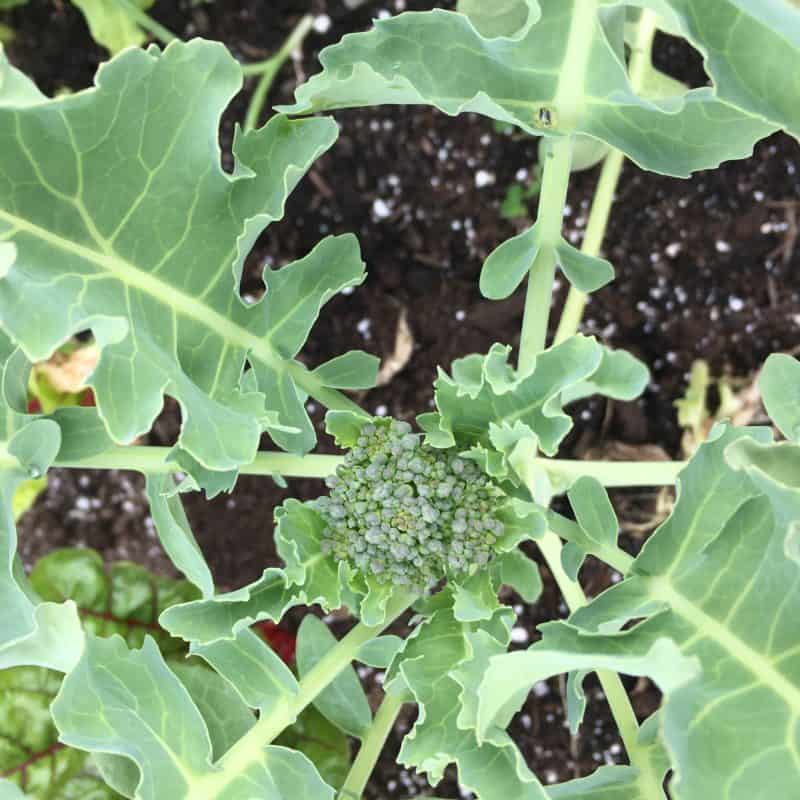
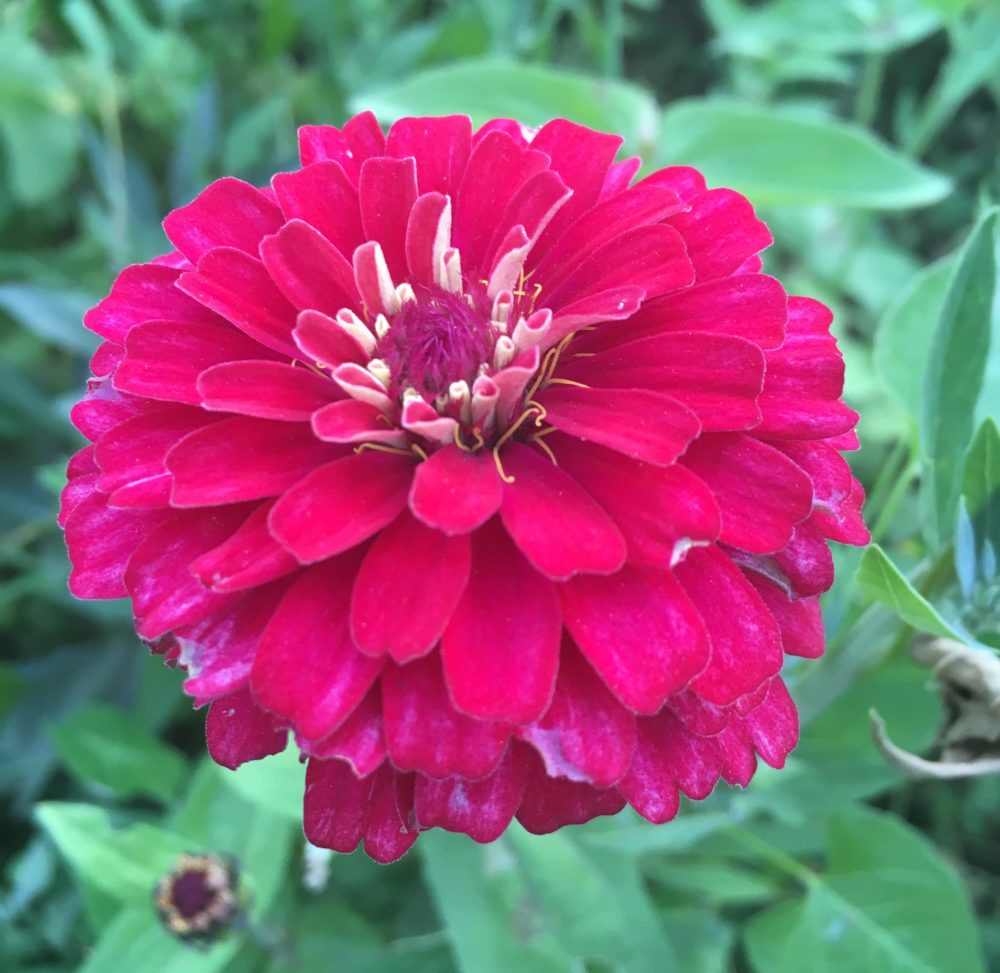
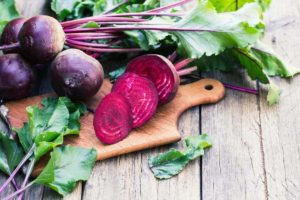
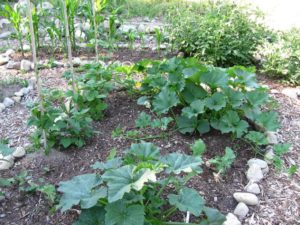
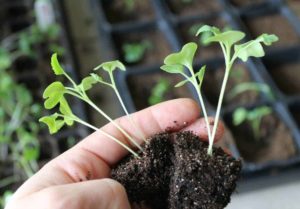
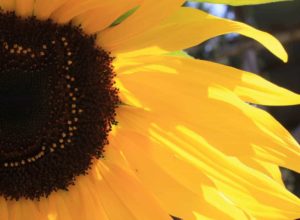
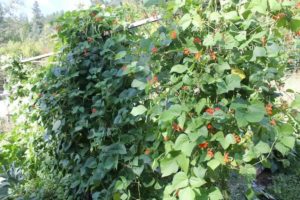
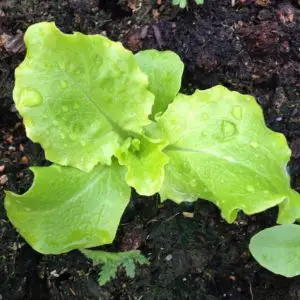
I love to garden,grow reg plants,like info,apt garden done,Im looking for home,grow all.Jeff Schwersinske
Sparkling writing!! Thanks buddy for such a great information!!